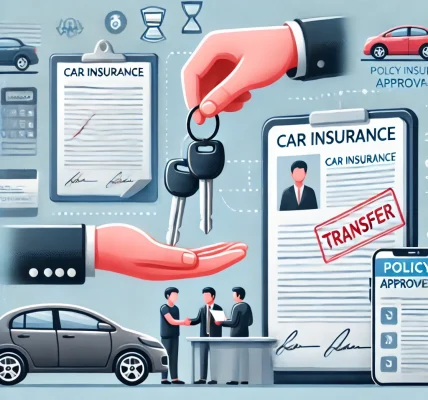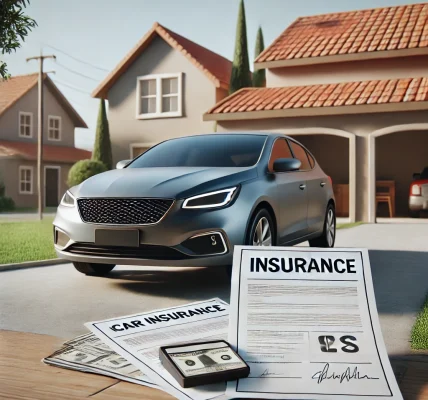When purchasing car insurance, you might wonder why two people with seemingly similar profiles pay different premiums. One key factor is the make and model of the vehicle they drive. Insurance companies assess risk based on a car’s characteristics, influencing the cost of coverage. Understanding these factors can help you make informed decisions when buying a car or shopping for insurance.
In this guide, we will explore how your car’s make and model affect your insurance rates and what you can do to optimize costs.
1. Vehicle Value and Replacement Cost
The higher the value of your car, the more expensive it is to repair or replace, leading to higher insurance premiums.
✔ Luxury brands like Mercedes-Benz, BMW, and Audi typically have higher premiums due to expensive repairs and parts. ✔ Affordable models such as Honda Civic and Toyota Corolla usually cost less to insure. ✔ If a car has high resale value, it might be targeted by thieves, increasing comprehensive coverage costs.
Example: Insuring a high-end Tesla will likely cost more than insuring a basic Ford sedan because of the cost of replacement parts and advanced technology.
2. Safety Ratings and Crash Test Performance
Cars with better safety ratings tend to have lower insurance premiums because they reduce the risk of injury or damage in an accident.
✔ Vehicles with high crash-test scores from the NHTSA (National Highway Traffic Safety Administration) or IIHS (Insurance Institute for Highway Safety) can have lower insurance costs. ✔ Safety features such as airbags, lane departure warnings, and anti-lock brakes can qualify for discounts. ✔ SUVs and trucks may have different insurance rates depending on their safety performance and accident history.
Pro Tip: Check your vehicle’s safety ratings before purchasing to estimate potential insurance costs.
3. Repair and Maintenance Costs
Some cars are cheaper to repair than others, which directly impacts insurance rates.
✔ Cars with commonly available and inexpensive parts have lower insurance costs. ✔ High-end or exotic vehicles with specialized parts and mechanics require higher repair costs, increasing insurance premiums. ✔ Vehicles with frequent recalls or high repair frequency often have higher premiums.
Example: A Honda Accord, known for affordable maintenance, will have lower insurance costs than a Maserati, which requires specialized servicing.
4. Vehicle Theft Rates
If a car model is frequently stolen, insurers may charge higher premiums due to the increased risk of theft claims.
✔ Some cars, like the Honda Civic and Ford F-150, are among the most commonly stolen vehicles, leading to higher insurance costs. ✔ Installing anti-theft devices can help reduce premiums for high-theft models. ✔ Comprehensive insurance covers theft, but the cost may be higher for frequently stolen cars.
Pro Tip: Check theft statistics before purchasing a vehicle, and consider adding security features to reduce insurance costs.
5. Engine Size and Performance Level
The more powerful your car’s engine, the more expensive your insurance will be due to increased accident risk.
✔ Sports cars and high-performance vehicles tend to have higher accident rates, leading to increased premiums. ✔ A standard sedan with a 4-cylinder engine will generally cost less to insure than a turbocharged V8 muscle car. ✔ Younger drivers insuring high-performance cars may face significantly higher rates.
Example: A Dodge Charger Hellcat with a 700-horsepower engine will cost more to insure than a Toyota Prius due to its speed potential.
6. Type of Car: Sedans vs. SUVs vs. Trucks vs. Sports Cars
The category of your vehicle plays a crucial role in determining insurance premiums.
✔ Sedans: Typically have lower insurance rates due to their balanced safety and repair costs. ✔ SUVs: Depending on the model, some SUVs may have higher premiums due to rollover risks, while others may have lower rates due to safety features. ✔ Trucks: Commercial-use trucks may have higher premiums, while personal-use pickups with safety features may have moderate rates. ✔ Sports Cars: Often the most expensive to insure due to high speeds and performance risks.
Pro Tip: Family-friendly vehicles with good safety records tend to have lower insurance costs.
7. Vehicle Usage and Annual Mileage
How you use your car also affects your insurance premiums.
✔ Personal-use vehicles generally have lower insurance costs compared to those used for commercial purposes. ✔ Higher annual mileage increases accident risk, leading to higher premiums. ✔ Insurance companies may offer discounts for low-mileage drivers or those using telematics programs.
Example: A delivery driver with high daily mileage will have higher insurance costs compared to a commuter who drives only a few miles each day.
8. Advanced Safety and Security Features
Modern cars come with advanced technology that can help reduce insurance premiums.
✔ Features such as automatic emergency braking, lane departure warnings, and adaptive cruise control may qualify for discounts. ✔ Anti-theft devices, tracking systems, and immobilizers can lower comprehensive insurance costs. ✔ Some insurers offer telematics-based discounts for cars with driver-monitoring technology.
Pro Tip: Ask your insurer about discounts for advanced safety and security features.
9. Insurance Group Ratings and Insurer Classifications
Insurance companies classify vehicles into groups based on risk assessments.
✔ Cars in lower insurance groups have cheaper premiums. ✔ Insurers analyze claim history, damage susceptibility, and repair costs when classifying vehicles. ✔ You can check a car’s insurance group rating before purchasing to estimate insurance costs.
Example: A Toyota Camry might be in a lower insurance group than a BMW 5-Series due to lower repair costs and better reliability.
10. Electric and Hybrid Cars vs. Gas-Powered Cars
Electric and hybrid vehicles may have different insurance costs compared to traditional gas-powered cars.
✔ EVs and hybrids often have higher repair costs due to advanced technology. ✔ Some insurers offer eco-friendly discounts for electric and hybrid vehicles. ✔ Battery replacement costs for electric cars can increase comprehensive insurance rates.
Pro Tip: Research insurance costs for electric vehicles before switching from a gas-powered car.
How to Lower Insurance Costs Based on Your Car’s Make and Model
If you want to save on insurance, consider these tips:
✔ Choose a car with a high safety rating and low repair costs. ✔ Install anti-theft devices and security systems. ✔ Opt for a lower-powered engine to reduce risk factors. ✔ Compare insurance quotes before buying a new car. ✔ Use telematics programs to earn safe-driving discounts. ✔ Limit annual mileage and inform your insurer if you drive less than average. ✔ Research theft statistics and avoid commonly stolen vehicles.
Conclusion
Your car’s make and model play a significant role in determining your insurance premiums. Factors like repair costs, safety ratings, theft rates, and engine performance all influence how much you pay. By understanding these factors and making informed choices, you can minimize insurance costs while still enjoying the benefits of a reliable and safe vehicle.
Before purchasing a car, always research its insurance impact, compare quotes from multiple providers, and take advantage of discounts to get the best deal on your coverage.




